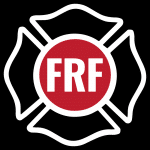Firefighter Fitness- Hill Training to Increase VO2 Max
VO2max is a measure of the maximum rate at which an athlete’s body is able to consume oxygen when performing a specific activity, adjusted for body weight. This is a very important for the fire rescue athlete, a higher VO2 max means that the firefighter can do more work with less oxygen. This comes in extremely helpful when doing fire operations (on air) of course. VO2 max can be calculated many ways, the easiest is to use a treadmill or track (read more about calculating VO2 max by clicking here.)
From a fire rescue fitness program perspective, the program should not only focus on sstrength and flexibility but also on increasing VO2 max. This brings me to today’s topic. Last year I personally focused on training for the Ironman, which is a very endurance based event, even though I completed the event (you can read about my journey here) I still felt that I was lacking recovery on the fire ground. This year I have focused on increasing my VO2 max by performing more intervals and by hill training.
There are two major factors that contribute to a high VO2max. One is a strong oxygen transport system, which includes a powerful heart, hemoglobin-packed blood, high blood volume, high capillary density in the muscles, and high mitochondrial density within the muscle cells. The other is speed, or the capacity to contract a large number of muscle fibers simultaneously, as the more muscle tissue is active at any given moment, the more oxygen the muscles demand. Running up hills helps to improve both of these factors.
Close to the firehouse we have a pretty big and steep hill, along with my regular interval training, I’ve been trying to run the hill for at least one session each week.
Hill Intervals
Try to find a hill that takes anywhere from 20 to 90 seconds to get to the top. Because running hills can be very stressful on the body and joints you want to make sure to warm-up properly.
Before I run the hills I perform this warm-up:
Walk for 5 minutes around the park (including one walk to the top of the hill and zig-zag down).
Perform 10 air squats (slowly)
10 overhead to ground chops
10 walking quad stretches
Head for the hill
If your new to running hills, start slowly, try to jog up slowly and gradually increase your speeds.
My workout today was to run up the hill (about 40 seconds) then zig-zag back down to catch my breath 5 x for a total workout of 20 minutes. My goal is to increase one hill each week.
Give it a try and let me know what you think. I can tell you from experience it will be a love/ hate relationship.
Stay safe and healthy,
A. Zamzow


